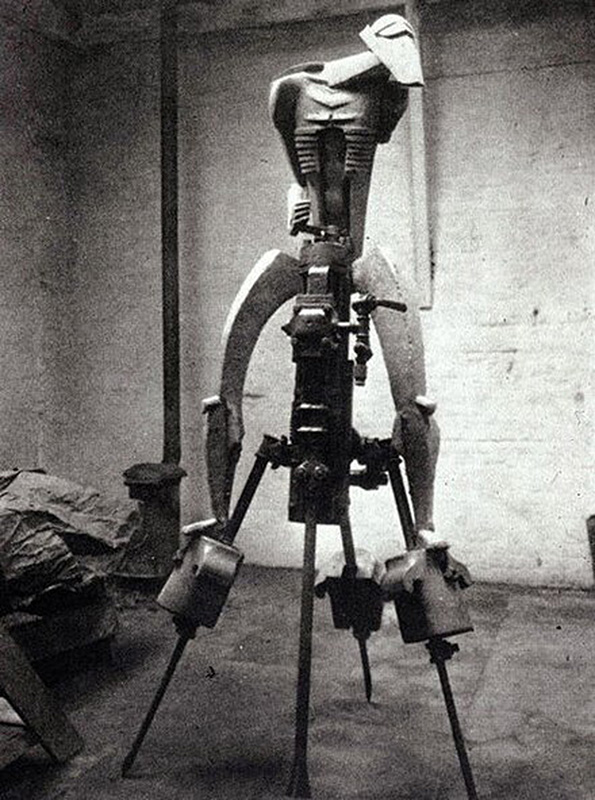London Group archivist David Redfern on Britain’s first ‘ready-made’ sculpture.

In “111 Not Out” I am showing a work based on Jacob Epstein’s “Rock Drill”. I’ve known and been awe-struck by this sculpture for many years, not least because it was the first British ‘ready-made’ sculpture, using an actual rock drill sourced from a Welsh quarry.
Wikipedia shows a grainy black and white photograph of “Rock Drill” which it claims was taken whilst the sculpture was on show at Brighton City Art Gallery (sic), December 1913 to January 1914. No, it wasn’t! An invitation from Brighton Art Gallery to mount an exhibition was one of the last acts of the dissolving Camden Town Group before it was enlarged into The London Group. The “Exhibition by the Camden Town Group and Others” was held between December 16th, 1913 and January 14th, 1914 in Brighton at the Public Art Galleries and was considered to be ‘a dry run’ for The London Group.
In December 1913, Epstein held his first one-man show at the Adelphi Gallery, London including drawings for “The Rock Drill” which he was working on at the time (therefore it could not have been shown in Brighton). He rented rooms above Harold Monro’s Poetry Bookshop at 35 Devonshire Street (now Boswell Street) which was an important centre for artists and poets from 1913 to 1926 although he also rented studios in several other locations including a cold, damp garage in Lambs Conduit Street. Henri Gaudier-Brzeska and Ezra Pound saw “Rock Drill” there in 1913. There exists a report of Epstein throwing back a tarpaulin protecting the sculpture from a leaky roof to gasps from those assembled as the menacing form was revealed in the gloomy, dank studio. Now look at the Wikipedia photograph. Is that a stove on the left of “Rock Drill”? I doubt Brighton City Art Gallery would have been kept warm by such a tiny device. And what is that crumpled mass on the floor, could it be the aforementioned tarpaulin? I reckon this is Epstein’s Lambs Conduit Street studio.
As a founder member of The London Group (and reputed to have named the group in one of its formative meetings) Epstein exhibited “Rock Drill” in “The Second Exhibition of Works by Members of The London Group” at the Goupil Gallery, 5 Regent Street in March 1915. He had priced his sculpture at £300 which, in 1940, Epstein had described as “a machine-like robot, visored, menacing”. Only one sculpture was shown in “The Fourth Exhibition of Works by Members of The London Group” at the Goupil Gallery in June 1916, Epstein’s “Torso in Metal from the Rock Drill” c.1913-15. Some academics believe that Epstein mutilated the original plaster torso as a protest against the butchery and disfigurement of war and, following a breakdown, he did not exhibit with The London Group for another ten years. Often overlooked but very noticeable within the robot’s ribcage is a foetus. In 1908 Epstein had sculpted a figure “Form emerging from Chaos” of a naked man holding a fragment of rock with a foetus inscribed on it (BMA Building, the Strand, London). Was “Rock Drill” a development of this idea and was it in fact in the genre of ‘Mother and Child’? It was not until 1960 that the Tate Gallery as it was then purchased “Torso” which can now be seen on show in Tate Britain’s “Historic and Modern British Art” display.
Should you wish to learn more about Jacob Epstein there is an excellent article by Gill Hedley at www.gillhedley.co.uk/pdf/Epstein-essay
David Redfern LG, 2024
111 Not Out: The London Group (1913-2024)
2 March – 27 April
Open Daily: 9 – 5 pm FREE
Quay Arts Centre
Sea Street,
Newport,
Isle of Wight PO30 5BD
